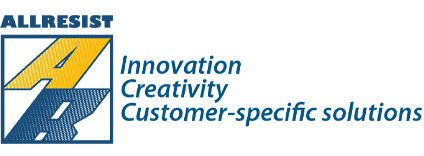EUV-lithography (EUVL) is a photolithography method which exploits electromagnetic radiation with a wavelength of 13.5 nm (91.82 eV, the so-called extreme ultraviolet radiation or EUV). This promising approach should in the future allow a further structural reduction in semiconductor industries in order to produce smaller, more efficient, faster and also cheaper integrated circuits.
In cooperation with the RWTH Aachen, Medusa 82 samples were assessed with respect to their suitability for EUV lithography.

EUV tool of the RWTH Aachen, Chair of Technology Optical Systems TOS, Aachen
The wafers were coated with Medusa 82, exposed and developed with developer AR 300-44. Subsequently, the gradation was determined.

Layer build-up with different EUV doses

Resulting gradation curve
For an optimum handling of EUV lithography using the RWTH system, a sensitivity range of 30-40 mJ/cm² is desired. A Medusa 82 sample supplemented with 2.5 % photoacid generator (PAG) already reached this target range. These investigations will be continued within the scope of a research project.
Overview E-beam Negative
